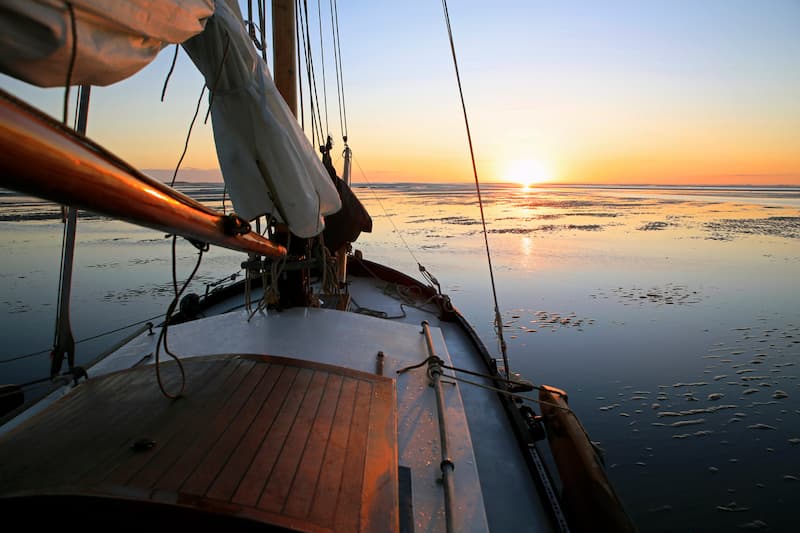
As a company that provides maintenance equipment for marine vessels, Offshore Supply understands the importance of proper communication and understanding of nautical terminology. In the marine industry, it is crucial to use the correct language to communicate effectively, especially when dealing with critical situations at sea. Therefore, as experts in marine supplies online, we have continued from our previous blog with a complete glossary of common nautical terminology from D-L. Whether you are a seasoned sailor or new to the boating world, this glossary will be an essential resource for anyone who wants to navigate the waters confidently.
Nautical Terms D
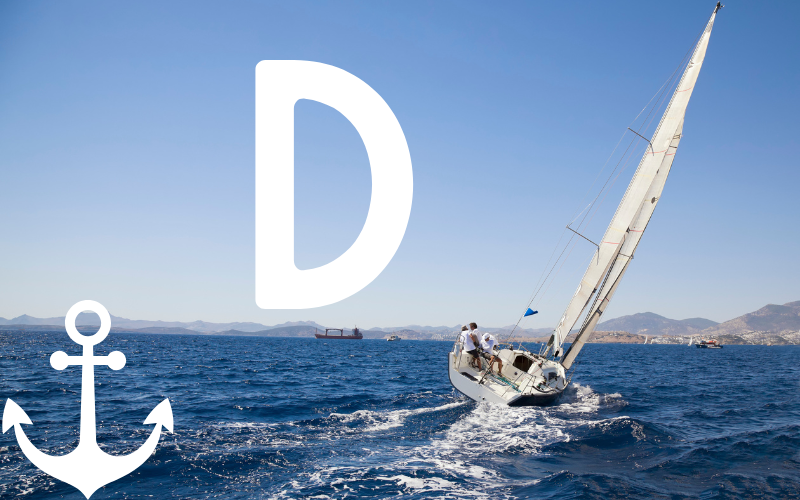
Davit: A device used for lifting and lowering boats or other equipment from a ship’s deck.
Dead reckoning: The process of calculating a ship’s position based on the last known location and speed.
Deadrise: The angle between a ship’s waterline and the lowest part of its hull.
Deck: The horizontal surface of a ship’s structure that forms the uppermost part of the hull.
Deckhouse: A structure built on a ship’s deck to provide shelter or living space.
Dock: A structure designed to allow ships to be loaded or unloaded, repaired, or stored out of the water.
Draft: The depth of a ship’s hull below the waterline.
Drift: The sideways movement of a ship caused by wind or currents.
Drydock: A facility designed to allow ships to be repaired or maintained out of the water.
Dutchman: A wooden wedge used to fill gaps in a ship’s planking.
Nautical Terms E
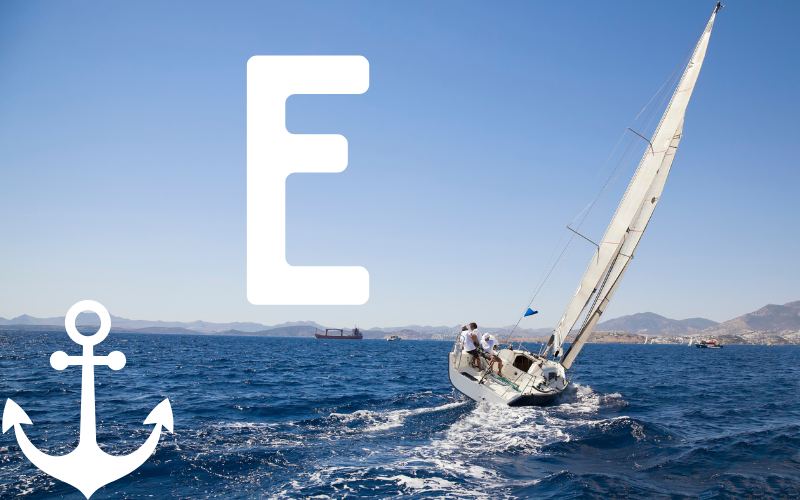
Ebb: The period of the tide when the water is receding or flowing out to sea.
Eddy: A current of water or air moving in a circular pattern, typically caused by obstructions or changes in the current.
Edge: The outer part of a ship’s hull, where it meets the waterline.
Engine room: The compartment of a ship where the engines are located.
Ensign: The national flag of a country, flown on the stern of a ship.
Estuary: The area where a river meets the sea, characterised by brackish water and shifting sandbars.
Evacuation drill: A safety exercise carried out on board a ship to practice emergency evacuation procedures.
Eye: A loop or hole in a line used for attaching it to a hook, cleat, or another object.
Nautical Terms F
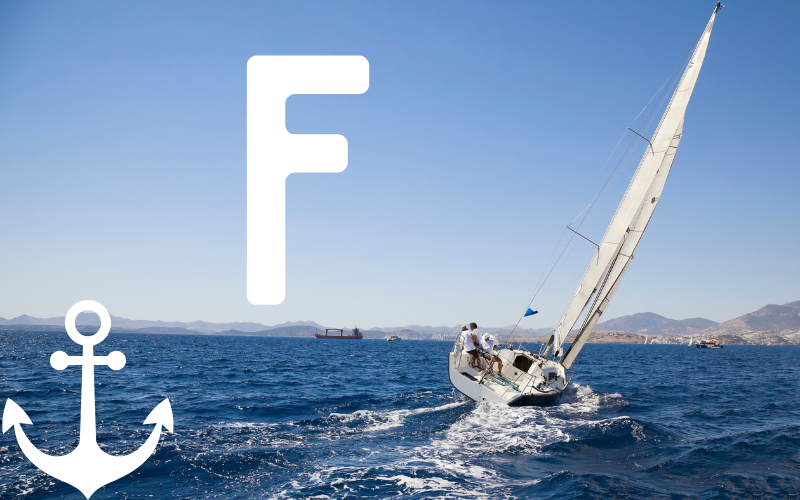
Fairlead: A device used to guide a line or cable in a specific direction.
Fathom: A unit of measurement used to describe the water depth equal to six feet.
Ferry: A boat or ship used to transport people, vehicles, or goods across a body of water.
Figurehead: A carved or sculpted figure on the bow of a ship, typically representing a person or animal.
Flare: A type of distress signal fired from a gun or launched from a rocket, used to attract attention.
Flotsam: Debris or wreckage floating in the water.
Forecastle: The ship’s upper deck, located at the bow, used for crew quarters or storage.
Freeboard: The distance between the waterline and the main deck of a ship, measured vertically.
Nautical Terms G
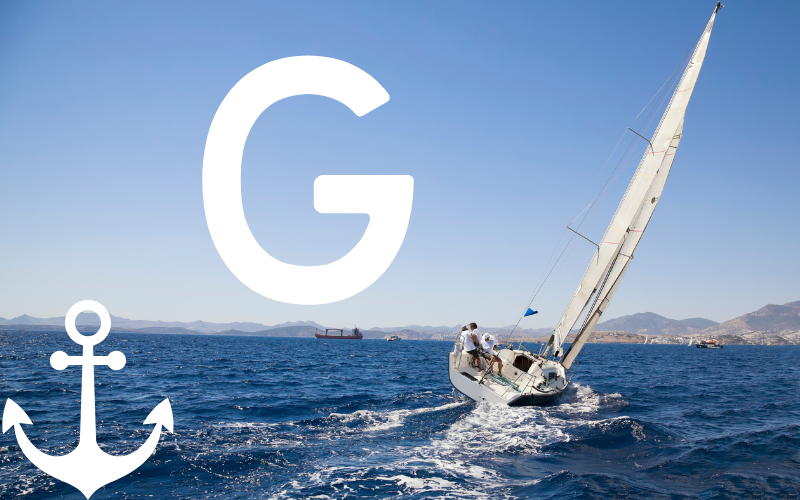
Galley: The kitchen area on a ship, used for preparing food and cooking.
Gangway: A movable bridge or ramp used for boarding or leaving a ship.
Gaff: A spar that supports the upper edge of a fore-and-aft sail.
Galleon: A large, multi-decked sailing ship used primarily by European countries during the Age of Sail.
Garmin: A brand of electronic navigational equipment used on boats and ships.
Gasket: A rope or line used for securing a sail or other object.
Genset: A generator set used to produce electricity on board a ship.
Gimbal: A device that allows an object, such as a compass or a lamp, to remain level despite the ship’s motion.
Nautical Terms H
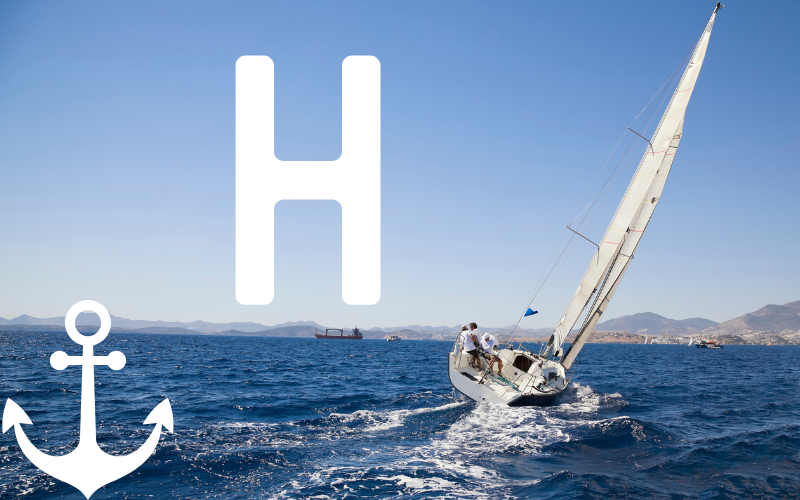
Half-mast: The position of a flag or sail when it is flown or hoisted halfway up the mast as a sign of mourning or respect.
Halliard: A line used for hoisting or lowering a sail, flag, or another object.
Hand bilge pump: A small, portable pump that removes water from the bilge.
Harbor: A sheltered body of water where ships and boats can anchor or dock.
Hatch: An opening in the deck or roof of a ship used for access, ventilation, or loading and unloading cargo.
Head: The toilet or bathroom area on a ship.
Heading: The direction in which a ship is travelling, expressed as a degree or point on the compass.
Helm: The wheel or tiller used to steer a ship or boat.
Nautical Terms for the Letter I
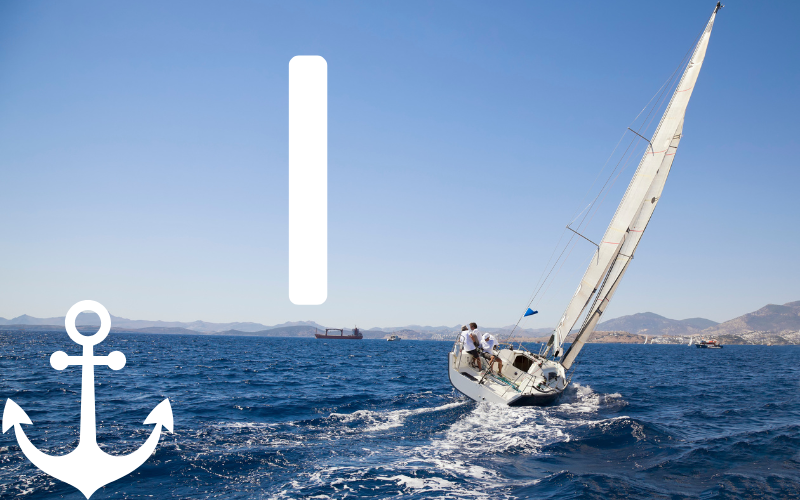
Inboard: Toward the centerline or inside of a ship.
Inflatable boat: A boat made of rubber, plastic or other materials that can be inflated with air or gas.
Inlet: A narrow body of water that leads from the sea into a larger body of water.
Intercoastal: The waterways that run along the coastlines of the United States and connect to rivers, canals and other bodies of water.
International Code of Signals: A standardised system of signals used by ships and boats to communicate messages to one another.
Irons: A sailing term that refers to a situation in which a sailboat is pointed directly into the wind and cannot make progress.
Isle: An island or a small piece of land surrounded by water.
Isobar: A line on a weather map that connects points of equal barometric pressure.
Nautical Terms for the Letter J
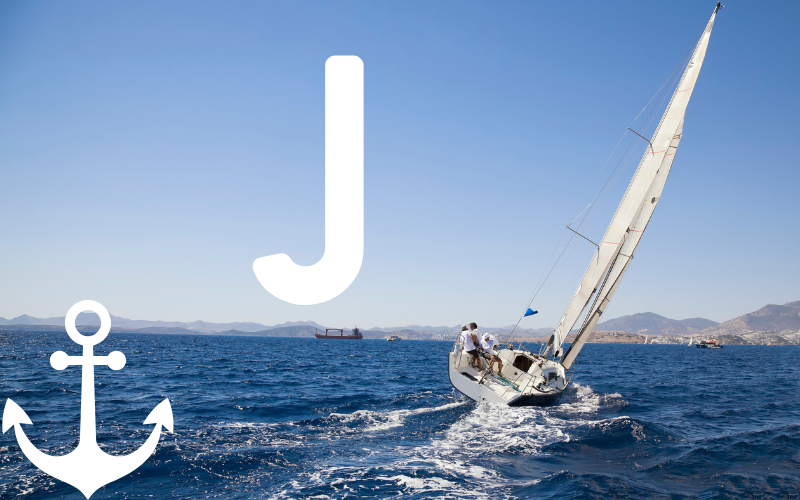
Jib: A triangular sail set forward of the mast on a sailboat.
Jibe: A sailing manoeuvre in which a boat turns its stern through the wind so that the sail changes from one side of the boat to the other.
Jolly Roger: A pirate flag that typically features a skull and crossbones.
Jumper stay: A stay that supports a ship’s mast and helps to control its movement.
Jury rig: An improvised or makeshift rigging used when the regular rigging has been damaged or lost.
Jetty: A structure built out into the water to protect a harbour or other waterfront area.
Jackstaff: A short staff or pole mounted on the bow of a ship, used to fly a flag or pennant.
Jacob’s ladder: A rope or wooden ladder with wooden rungs used for boarding or leaving a ship.
Nautical Terms for the Letter K
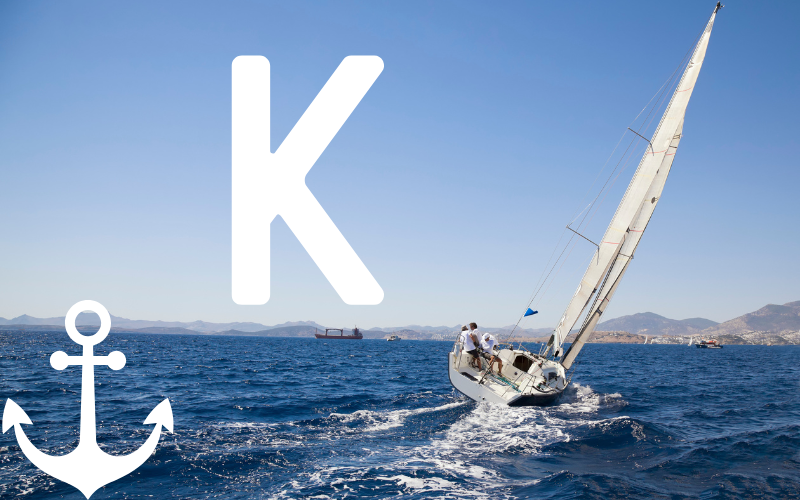
Keel: The central structural member of a ship, running lengthwise along the bottom and providing stability.
Ketch: A sailing vessel with two masts, the forward of which is shorter than the aft.
Knot: A unit of speed equal to one nautical mile per hour.
Kayak: A small, narrow boat with a covered deck and a single or double paddle, typically used for recreational or sporting purposes.
Knuckle: The sharp edge or angle formed where the bottom and sides of a boat meet.
Kedge anchor: A small anchor that moves a ship or boat forward or sideways.
Kevlar: A strong, lightweight synthetic fibre used to construct ropes and other nautical equipment.
King post: A vertical post supporting a ship’s structure and rigging, typically located in the ship’s centre.
Nautical Terms for the Letter L
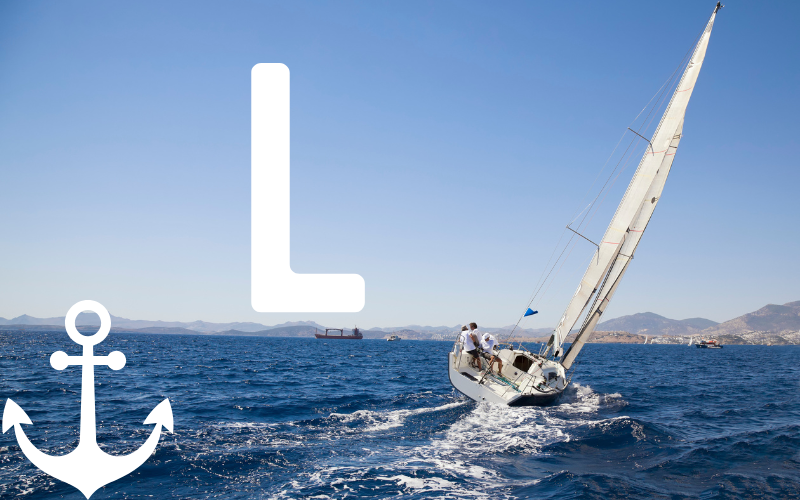
Lagoon: A shallow body of water separated from a larger body of water by a barrier, such as a reef or island.
Lanyard: A line or cord used for securing or hoisting objects, such as a tool, sail, or flag.
Latitude: The distance north or south of the equator, measured in degrees.
Leeward: The side of a ship or boat that is away from the wind.
Lee shore: A shoreline that is downwind of a ship, which can be dangerous because the wind can push the ship onto the shore.
Lifeline: A line or rope used to provide safety and prevent people from falling overboard.
Lighthouse: A tall structure with a powerful light used to guide ships and boats through difficult or dangerous waters.
Log: A device used to measure the speed and distance travelled by ship or boat through the water.
Keep Your First or Your Fleet in Tip-Top Shape
Whether you have an entire fleet of vessels or are looking to get your first one, keeping it in tip-top shape is essential for your safety out at sea. So, whilst this blog may have helped ensure smooth sailing for communications, be sure to keep your vessel maintained with our help. We offer a variety of Deck Hardware and Marine Engine Spares to help keep your essential repairs afloat. Trust a company with excellent history and even better services for all things vessel maintenance. Order any of our products online or contact us to ensure you are getting the right products for your boat or ship.